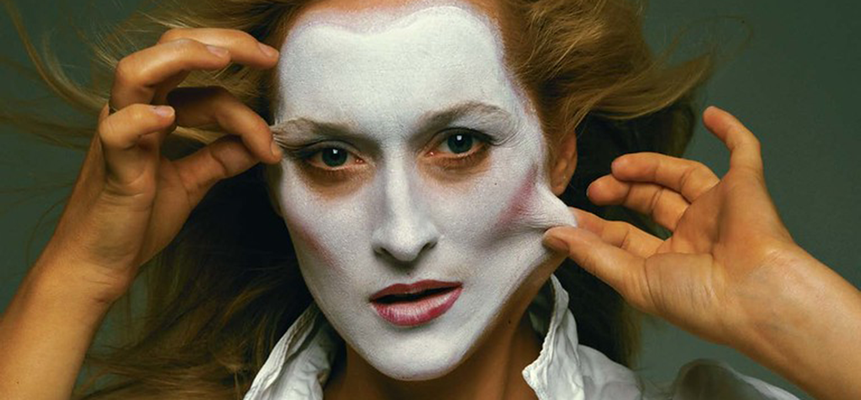Photographs tells stories beyond what words can even capture. They evoke emotion, bring us to new places, and challenge our stereotypes. That is the almighty power of the captured image.
While the photography world is often dominated by the names of well-known men, a countless number of incredible women photographers have shaped the genre as we know it—bringing their own views of the world and paving the way for new creative storytelling that crosses both boundaries and gender.
In honor of Mother’s Day we’d like to highlight some of these famous names in photography so that hopefully they can serve as an inspiration for future generations of both men and women looking to capture the stories held in the world around them. And yes, many of them were Moms themselves.
 © Diane Arbus
© Diane Arbus
Diane Arbus
Diane Arbus is best known for many of her black and white photos capturing the marginalized, often underrepresented people in her everyday life. Her subjects include senior citizens, people with disabilities, transgenders, nudists, and even circus acts. She shed light on the often overlooked, and by doing so forced her audience to see the truth in the world around them.
After working as a photographer in the 50’s and 60’s for fashion magazines, she became fed up with the work and decided to quit, most likely a rebellion against the often dolled-up version of humanity captured in the fashion shoots. Instead she took to the streets, and using just a 35-mm Nikon began shooting the work she later became famous for: real, unique people.

© Annie Leibovitz
Annie Leibovitz
Annie is a modern photographer whose work often involved shooting some of the major celebrities of the last 30 years, including Meryl Streep, William Burroughs, and John Lennon. Her early work led her to become the staff photographer for Rolling Stone magazine, a position she would hold for over 10 years. Her images offer extreme conceptualization, bold colors, and poses—often accentuated by lighting to tell a much deeper story of the subject.
She is often known for her image of John Lennon and Yoko Ono, which was photographed hours before John was murdered.
Her work and career led her to become the first woman to hold an exhibition at Washington's National Portrait Gallery in 1991, a truly groundbreaking achievement for any living artist.
© Dorothea Lange
Dorothea Lange
It was during the great depression that Dorothea took some of the most iconic images of the 20th century by capturing the elemental poverty and struggle of the lives of working-class people during the period. The Farm Securities Administration (FSA) hired her to help bring the plight of the forgotten victims to the forefront of society, often promoting her images for free to local newspapers. Many of these images, including Migrant Mother, became icons of the era. In 1960 Lange spoke about the experience she had while capturing the photo:
I saw and approached the hungry and desperate mother, as if drawn by a magnet. I do not remember how I explained my presence or my camera to her, but I do remember she asked me no questions. I made five exposures, working closer and closer from the same direction. I did not ask her name or her history. She told me her age, that she was thirty-two. She said that they had been living on frozen vegetables from the surrounding fields, and birds that the children killed. She had just sold the tires from her car to buy food. There she sat in that lean-to tent with her children huddled around her, and seemed to know that my pictures might help her, and so she helped me. There was a sort of equality about it.[12]
It was Dorothea’s work that shed a light on an otherwise forgotten situation and rallied the government, and the public, to help.

© Cindy Sherman
Cindy Sherman
Cindy’s work carries many similar themes of self identity vs societal norms, often forcing viewers to re-imagine our perspective and stereotypes prevalent throughout society. In one of her more famous series “Untitled Film Stills”, Cindy was both the model and the photographer in her images—enacting, and shedding light on, some of the biggest female cliché’s prevalent during the 70’s. Her characters often shed the typical conventions of marriage and family and allow the viewer to rethink how they perceive themselves and how the world might perceive them.

© Sally Mann
Sally Mann
Sally is an American photographer and mother who is most famous for capturing the honest, unabashed lives of her 3 children growing up in the South through large-format, black and white images. Being a mother is a powerful subject in its own right, with children becoming the focus of the family as they grow. Everything from sleeping, playing, and eating become moments in time that capture the expressiveness of youth.
Her experimentation with various camera and film types have produced images with a more vintage feel, the effect of which further create a sense of nostalgia and innocence to the photos themselves.
Tell your own story with Lifeprint
These amazing women photographers not only shared a common desire to capture a moment in time, but also the desire to print it for the world to see. As technology continues to evolve, smartphones like iPhone and Android have put a powerful camera right in our pocket, giving more people the power to capture and share their own perspective on the world with the world in an instant. The future doesn’t stop at photos either. At Lifeprint we’re developing technology that enables the photo visionaries of the future to share their memories like never before, translating photos and videos into a physical printed image that can be shared with anyone, anywhere.
With all of this photographic technology at our fingertips only one question remains: what visual story will you tell?







